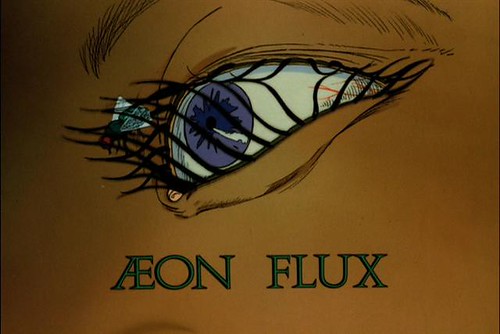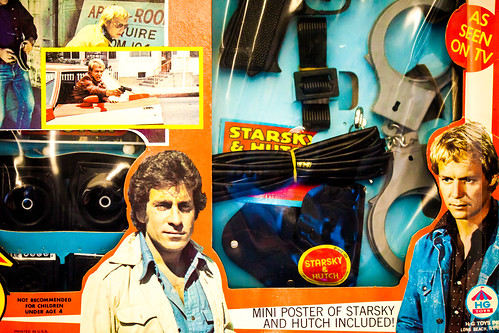Æon Flux
Æon Flux’s surprisingly modern take on privacy and surveillance. | Slate – Æon Flux was a name that I hadn’t heard in at least a decade. I remember when it came out as I enjoyed cable TV in our student house. It fitted in with the wider cyber culture. The big beats and brash gravity defying visuals were everywhere from WipeOut to anime. The media was tech artefacts from a future counter-culture.
Macromedia Director and Flash produced animated video hardwired straight into our cortex. It was psychedelia but not as it had been experienced before. Asian animated and real world films weren’t mainstream but serious culture.
Æon Flux & The Matrix
The series came out in the early 1990s as part of a series of experimental animation on MTV called Liquid Television. It came out before The Matrix, yet drew from many similar influences:
- Cyberpunk
- Biopunk
- Anime
- Asian ‘gun fu’ action films
- European comics in particular the space opera works of Möbius, Mézières & Christin. You can also see the influence that Chung had working with Ralph Bakshi on his fantasy animation
- Gnostic beliefs
In another Matrix link; Æon Flux creator Peter Chung (피터 정) went on to create a segment for the Wachowskis’ The Animatrix which told part of the back story of The Matrix quadrology.
Privacy and the surveillance state
Each episode saw a conflict play out between an anarchic city and its authoritarian rival. Flux was an assassin from the anarchic city on undercover missions.
The animated series had been released on VHS, DVD and UMD – the Sony Playstation Portable (PSP) disk media that was the ultimate manifestation of cyberpunk storage. For some reason, it hasn’t been released on Blu-Ray yet.
It was truly transmedia with computer games and graphic novels to complement the animated series. Eventually Hollywood did a live action version that was vaguely related to the original Æon Flux. The original was too difficult and avant garde to be a Hollywood franchise, which is probably why the animated version has slipped back out of view.
Given that Æon Flux was influenced by cyberpunk was inevitably seen as a prescient take on privacy and the surveillance state.
Consumer behaviour
Taking Affection Back | No Mercy / No Malice – some interesting and intractable problems in society revolving around how men are set up for failure. Contrast the diagnosis with this article: The Great Feminization of the American University | City Journal – Female students and administrators often exist in a co-dependent relationship, united by the concepts of victim identity and of trauma. For university females, there is not, apparently, strength in numbers. The more females’ ranks increase, the more we hear about a mass nervous breakdown on campus. Female students disproportionately patronize the burgeoning university wellness centers, massage therapies, relaxation oases, calming corners, and healing circles. Another newly installed female college president, Dartmouth’s Sian Leah Beilock, claims that the two “most pressing challenges of our time” are the “mental crisis among young people” and climate change. College institutions “really have a part to play in how we support students” suffering from that mental health crisis – correlation and causality aren’t the same thing
Economics
EU-China Relations and the War in Ukraine: A Reappraisal | Sinification – there is no way China comes out of this well from an economic perspective and Apple’s Chinese suppliers are looking for a way out | Apple Must
Billionaire investor Mark Mobius says he cannot take money out of China -FOX Business | Reuters – Mobius was a China bull for a long time
Energy
Development or Conflict? The China-Taliban Alliance – energy is at the centre of this
Ethics
Why social class is advertising’s biggest diversity blind spot | Advertising | Campaign Asia – Social class might bring up antiquated ideas of British snobbery, but it exists everywhere. In Asia, social class is very pronounced. From obscenely wealthy ‘Crazy Rich Asian’ types, to a much reported on ‘rising middle class’, and a majority who are working class or live in poverty. The pandemic certainly brought class differences in Asia into sharp focus. Yet, despite making up the majority in society, advertising often fails to represent working class people. And when adverts do feature working class people, they usually perpetuate class-based stereotypes. Instead, the advertising industry is obsessed with targeting middle-class 18 to 34-year-olds, resulting in advertisements that seem to overlook the genuine diversity of society and instead mirror adland’s own demographic.
Health
Novak Djokovic’s unvaccinated status continues to stir controversy with latest U.S. tennis tournament withdraw – Since the start of 2022, Djokovic has missed the Australian Open, the U.S. Open and five Masters tournaments due to his vaccination status.
Why do education, health care, and child care cost so much in America?
Hong Kong
How Kwok Wai-Kin rose from disgrace to become a powerful national security judge (Part 1)
Ideas
Interview: Kevin Kelly, editor, author, and futurist – huge fan of Kevin Kelly, this makes interesting reading
Innovation
China outpacing US in critical tech research ‘should be a wake up call’: report – Breaking Defense
Japan
話題のChatGPTをLINEで使える「AIチャットくん」リリースから3日で20万登録突破 | みんなの便利な使用例を紹介 #AIチャットくん|株式会社piconのプレスリリース – LINE adds ChatGPT gains 200,000 users in 3 days. ChatGPT speaks and understands Japanese, but uptake in Japan has been hampered, apparently, because you need to speak English to sign up. Line is the dominant messaging platform in Japan, and last week they added ChatGPT. You just add “AI Chat-kun” as a friend and start chatting. Up to five messages per day are free, and you can upgrade to unlimited messages for ¥680/month (about $5).
Online
The ‘Digital China’ Plan, cross-border data, ChinaGPT
Philippines
[OPINION] Grayzone tactics: A maritime insurgency in the South China Sea?
Security
The Daring Ruse That Exposed China’s Campaign to Steal American Secrets – The New York Times – China publicly denies engaging in economic espionage, Chinese officials will indirectly acknowledge behind closed doors that the theft of intellectual property from overseas is state policy. James Lewis, a former diplomat now at the Center for Strategic and International Studies in Washington, recalls participating in a meeting in 2014 or so at which Chinese and American government representatives, including an officer from the People’s Liberation Army, discussed the subject. “An assistant secretary from the U.S. Department of Defense was explaining: Look, spying is OK — we spy, you spy, everybody spies, but it’s for political and military purposes,” Lewis recounted for me. “It’s for national security. What we object to is your economic espionage. And a senior P.L.A. colonel said: Well, wait. We don’t draw the line between national security and economic espionage the way you do. Anything that builds our economy is good for our national security.” The U.S. government’s response increasingly appears to be a mirror image of the Chinese perspective: In the view of U.S. officials, the threat posed to America’s economic interests by Chinese espionage is a threat to American national security.
Cybersecurity strategy shifts toward making developers liable | Embedded
Technology
INFER Public | The Pub Blog – Will U.S. allies go along with new export controls on China?
Telecoms
Re: It’s 2023 (was 2022) and still no IPv6 – Page 2 – Roku Community




